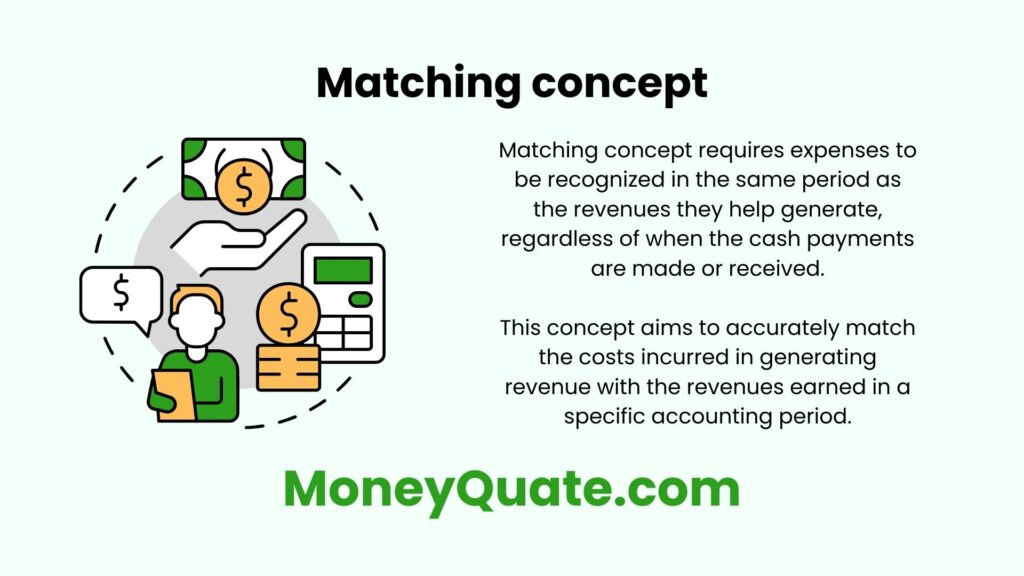As an accountant, I often encounter puzzlement when discussing the matching concept.
It’s a fundamental principle, but its essence can feel abstract.
Let’s break it down and unveil the magic behind this concept, ensuring your financial statements sing, not screech!
Imagine yourself running a bakery. You wouldn’t just throw flour, sugar, and eggs together and call it a day, right?
You’d meticulously measure each ingredient for a perfect cake, ensuring a delightful result.
The matching concept works in a similar way.

Contents
The Cause and Effect Symphony of The Matching Concept
Think of expenses as the ingredients in your financial recipe.
They are the costs you incur to generate revenue, the sweet melody of your business.
The matching concept dictates that these expenses must be recognized in the same period as the revenue they helped create. It’s about cause and effect.
The flour used this month shouldn’t magically appear as an expense next quarter after you’ve sold the cake!
Accrual Accounting: The Perfect Blend
The matching concept thrives in the world of accrual accounting.
Here, we recognize revenue when it’s earned, not necessarily when the cash hits your bank. Similarly, expenses are recognized when incurred, not when the bill arrives.
This beautiful blend ensures a more accurate picture of your financial performance for a specific period, regardless of cash flow timing.
Examples of The Matching Concept to Savor
Let’s bake some examples to solidify this concept:
Inventory and Cost of Goods Sold:
You buy a winter coat in November for $100.
It remains unsold that month, but sells for $150 in December.
The matching concept dictates the $100 cost is recognized as an expense (Cost of Goods Sold) in December, alongside the $150 revenue from the sale.
You pay your employees a monthly salary on the 1st for the previous month’s work.
In December, you pay a $10,000 salary for their November efforts.
The matching concept ensures this expense is recorded in November, reflecting the work performed.
You pay $2,400 for annual insurance in January.
The magic of matching dictates spreading this expense over the twelve months of coverage.
Each month, you’ll record an expense of $200 for insurance, even though the entire premium was paid upfront.
The Sweet Rewards of The Matching Concept
By embracing the matching concept, you reap several benefits:
Accurate Profitability:
Matching expenses to their corresponding revenue provides a clear picture of your company’s profitability for a specific period.
This is crucial for informed decision-making.
Enhanced Comparability:
Financial statements prepared using the matching concept allow for better comparison of your performance across different periods.
Consistency is key for investors and analysts evaluating your financial health.
Informed Decisions:
When financial statements accurately reflect your performance, stakeholders like investors and creditors can make more informed decisions about your company.
The Bottom Line
The matching concept isn’t just about following rules; it’s about presenting a clear picture of your financial health.
It’s the secret ingredient that allows your financial statements to tell a compelling story of your business’s success.
So, embrace the magic, bake some insightful financial reports, and watch your business flourish!